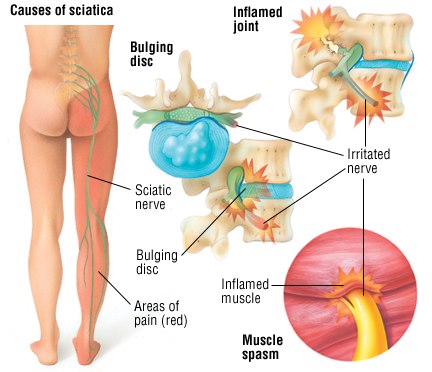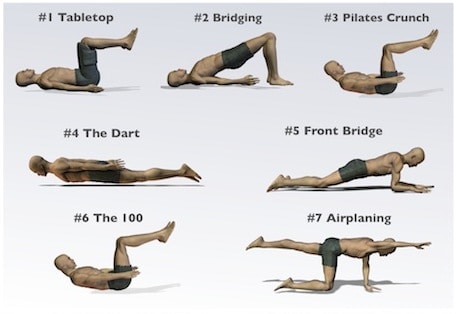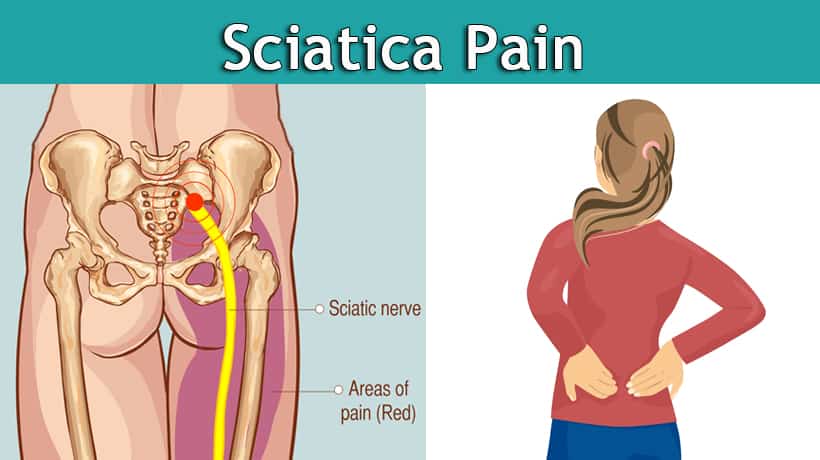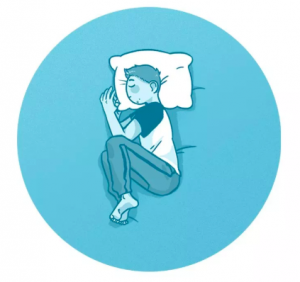
What is Sciatica?
Sciatica is the name provided to the pain caused by the sciatic nerve. Whatever irritates this nerve can trigger pain, from moderate to strong. Sciatica is normally triggered in the lower spine by a strained nerve.
The word “sciatica” is often mistaken with back pain in particular. Sciatica, however, is not only confined to the rear. The sciatic nerve is the human body’s shortest and largest nerve. It goes through the buttocks and down the feet from the lower back and ends just under the knee.
Sciatica is not a disorder but a symptom of the sciatic nerve and its malfunctioning. Some specialists predict that at least once in their lives, up to 40 percent of individuals will encounter sciatica. A broken (herniated) disc is the most prevalent source of sciatica.

What are the symptoms?
The primary symptom is a burning pain along the sciatic nerve anywhere; from the lower back, through the buttock, and down either leg’s lip.
Other prevalent sciatic conditions include numbness in the arm along with the feeling of skin swelling (sticks and arrows) in the feet and fingers. This pain can vary in intensity and can be deteriorated by standing for long stretches of time.
Who is at risk?
There are different variables that determine the risks of developing sciatica:
- Age: individuals aged 30 and 40 have an increased chance of getting sciatica.
- Profession: jobs that require individuals to lift heavy weights for a long time.
- Sedentary living: individuals who are physically inactive and sitting for long stretches of time are more likely to develop sciatica.
- Pregnancy: although the sciatic injury may be an issue during birth; an approximately 50%–80% of females have neck discomfort during childbirth. Hormones generated during pregnancy, tightening and flexing the ligaments may trigger back pain in some pregnant females.
How can a Chiropractor help with sciatica?
Chiropractic therapy aims to introduce exercise and motions that reduce sciatic pain by decreasing nerve pressure. Such manual therapies provide relief without the side effects of medications. Chiropractic therapy for sciatica combines strengthening, stretching and aerobic conditioning such as strengthening back and spine muscles, abdomen, buttocks, hips and hamstrings. A chiropractor will also advise increasing core strength and to engage in light aerobic conditioning activities such as walking, swimming or pool therapy.
A bit of exercising goes a long way
The stress on the sciatic nerve can be relieved by many forms. Exercising can help individuals to relieve sciatica symptoms and prevent getting medication. Patients are encouraged to seek medical care through a chiropractor doctor and develop a personalized treatment plan.
The spinal column consists of the vertebra (separate bodies in the spine that safeguard the fundamental nerves). In between vertebras, there are disks made of cartilage, which is a powerful and resilient tissue. The cartilage functions as a cushion between each vertebra and enables flexibility of the spine. When a disc is pressed out of location, a herniated disk happens placing stress on the sciatic nerve. Some patients think that if sciatica happens, staying in bed and avoiding physical activity is the best idea. For original sciatic flare-up, bed rest is generally okay for a day or two. However, avoiding longer activity can typically lead to a downward spiral where episodes of pain lead to inactivity, leading to more pain, etc.
Low back muscles become weak and deconditioned without adequate practice, leaving them less able to support the back and spine. For sciatica patients, keeping the hamstrings flexible by stretching is particularly essential as narrow hamstrings add stress to the low back, which can aggravate low back issues.

Exercise also helps to exchange nutrients within spinal disks, keep them healthy and prevent injury that can trigger sciatica. Even after sciatica has been relieved and other back issues have been addressed, the exercise routine should be retained to maintain the back safe and help prevent future issues.
Patients should always consult with a health care professional before starting an exercise program. Once the cause of sciatica is diagnosed, the practitioner can advise the patient on which exercises are most suitable and should be prevented.
Note this: Sitting around not only it is not going to help but it will make your symptoms worse. You will realize that painkillers and hot/cold packs will not cut the pain so please consider visiting a chiropractor. If you are in the Bay Area/ Santa Clara region contact us to schedule an appointment with one of our practitioners or stop by our clinic for a consultation.







